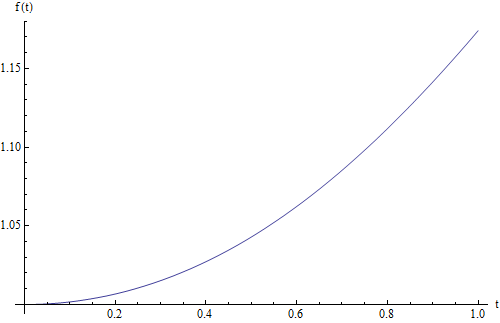Proposition 1.
The ratio of the surface areas
$A_\text{Möb}(R,r)/A_\text{flat}(R,r)$ depends only on the ratio of the
radii $r/R$.
Proposition 2.
The ratio of the surface areas $A_\text{Möb}(R,r)/A_\text{flat}(R,r)$
is a strictly increasing function of $r/R$. Since $0 < r \leq R$
we have
\[
1 < \frac{A_\text{Möb}(R,r)}{A_\text{flat}(R,r)} \leq
\frac{A_\text{Möb}(1,1)}{A_\text{flat}(1,1)} \approx 1.1739\ 7932\
4030.
\]



